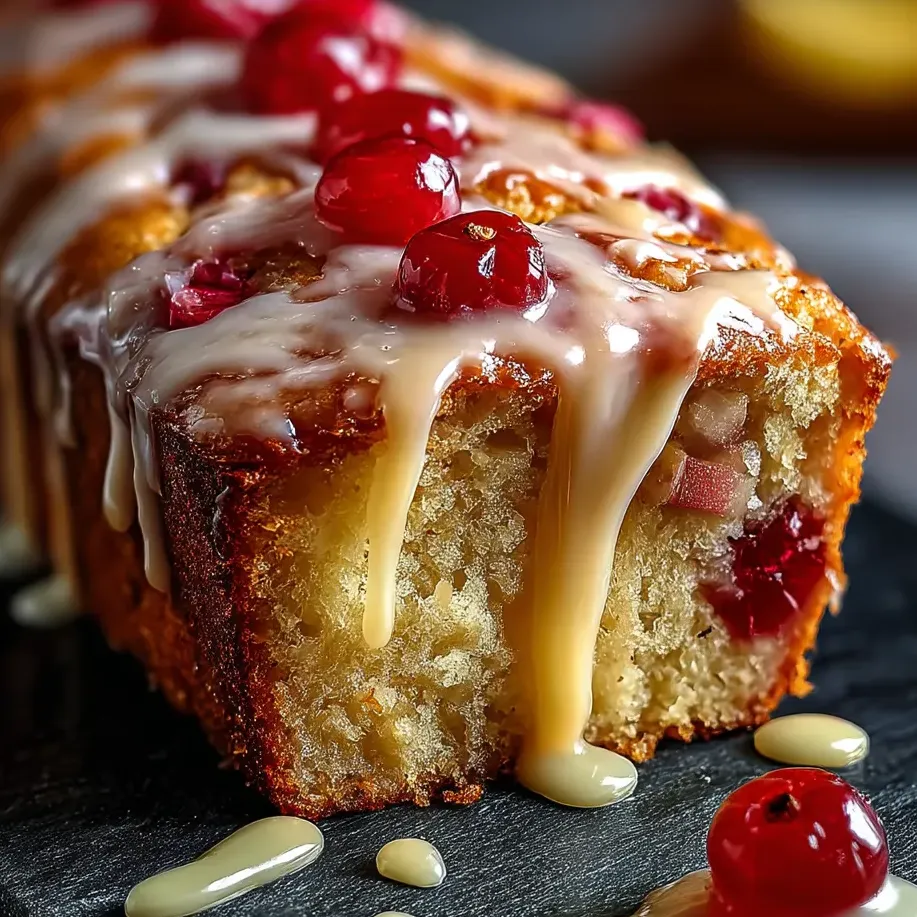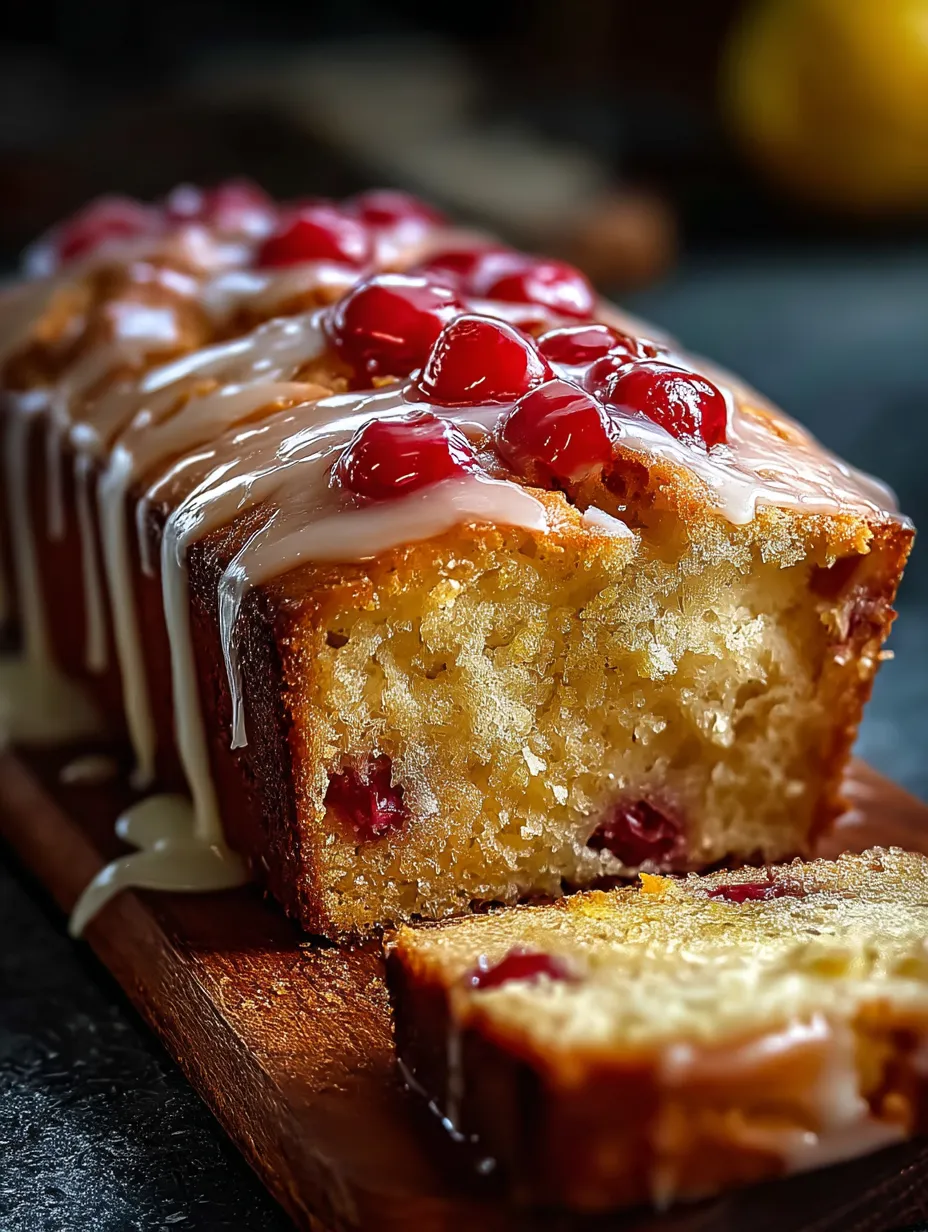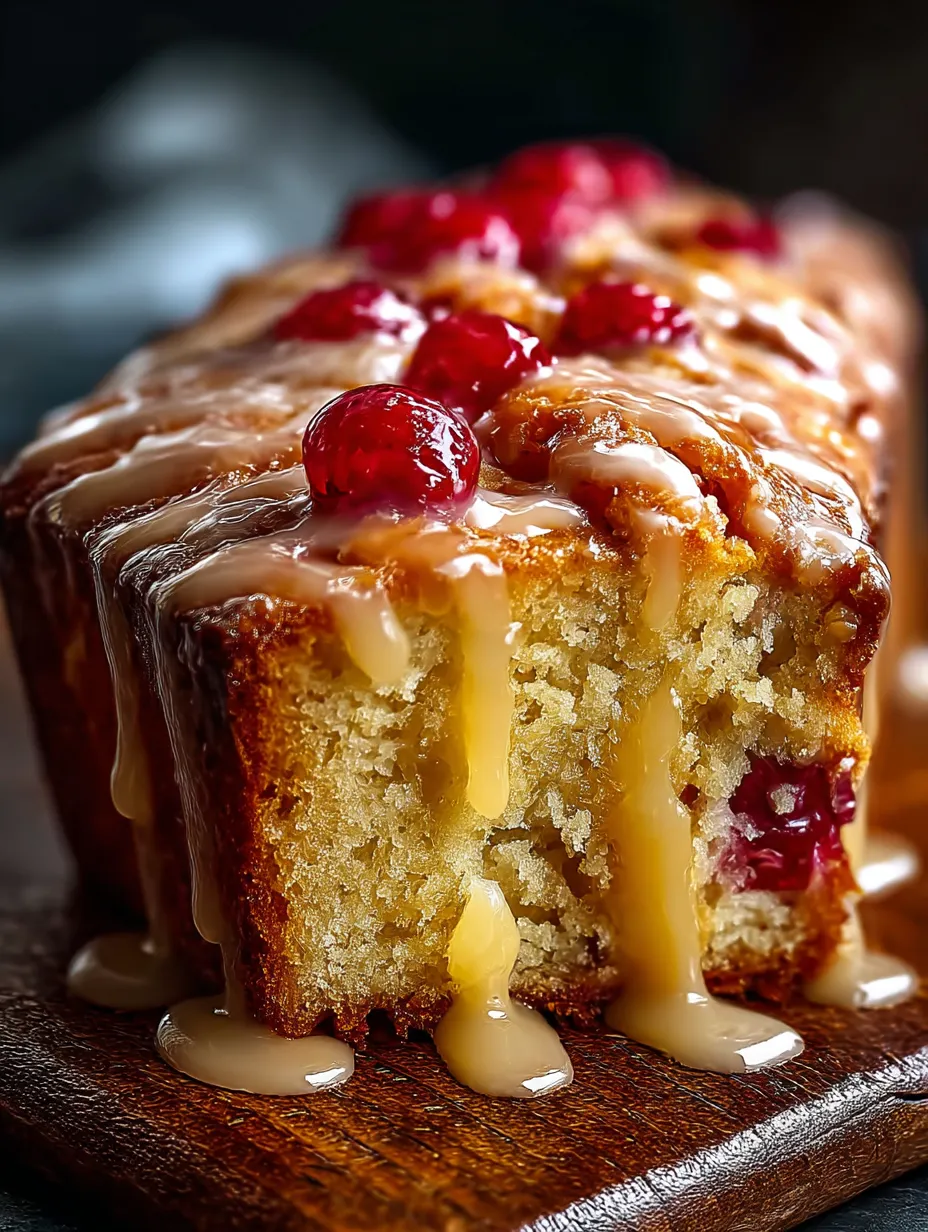 Save
Save
This tangy lemon rhubarb loaf brings together the bright acidity of lemon with the distinctive tartness of spring rhubarb. Topped with a zesty glaze, this loaf strikes the perfect balance between sweet and tart flavors, creating a refreshing treat that celebrates seasonal produce in the most delicious way.
I first made this loaf when my neighbor gifted me an abundance of rhubarb from her garden. My family devoured it so quickly that it has become our official spring tradition whenever those ruby stalks first appear at the farmers market.
Ingredients
- Butter: Adds richness and helps create a tender crumb in this loaf
- Sugar: Balances the tartness of both lemon and rhubarb
- Eggs: Provide structure and moisture
- Fresh lemon juice and zest: Deliver bright flavor that complements the rhubarb
- All purpose flour: Forms the base of our loaf
- Baking powder and baking soda: Ensure a proper rise
- Salt: Enhances all the flavors
- Sour cream: Adds moisture and tenderness, look for full fat for best results
- Fresh rhubarb: Brings a pleasant tartness, choose firm stalks with vibrant color
- Powdered sugar: Creates a sweet glaze that sets beautifully
Step-by-Step Instructions
- Prepare Your Equipment:
- Preheat your oven to 175°C or 350°F and thoroughly grease your loaf pan. I prefer using butter then a light dusting of flour to ensure nothing sticks. Make sure your loaf pan is standard size around 9×5 inches for proper baking.
- Create The Base:
- Cream together the softened butter and sugar until truly light and fluffy. This process should take at least 3 minutes with an electric mixer. The mixture should significantly increase in volume and turn several shades lighter. This step incorporates air which helps create a tender crumb.
- Add Wet Ingredients:
- Add eggs one at a time, fully incorporating each before adding the next. Then mix in the fresh lemon juice and lemon zest. The mixture might look slightly curdled at this point which is perfectly normal. The acidity from the lemon juice reacts with the dairy.
- Combine Dry Ingredients:
- In a separate bowl, whisk together the flour, baking powder, baking soda, and salt. This ensures even distribution of the leavening agents. Add this dry mixture to your wet ingredients gradually, mixing just until combined. Overmixing will develop gluten and create a tougher texture.
- Add Final Elements:
- Gently fold in the sour cream until the batter is smooth and uniform. Then carefully fold in the diced rhubarb pieces. Folding rather than vigorous mixing prevents the rhubarb from breaking down and preserves the air you incorporated earlier.
- Bake To Perfection:
- Pour the batter into your prepared loaf pan, smoothing the top with a spatula. Bake for 50 to 60 minutes. Begin checking at the 50-minute mark by inserting a toothpick into the center. When it comes out clean or with just a few moist crumbs the loaf is done. The top should be golden brown.
- Cool And Glaze:
- Allow the loaf to cool in the pan for 15 minutes before transferring to a wire rack to cool completely. This prevents the bottom from becoming soggy. Once fully cooled, whisk together the glaze ingredients and drizzle generously over the top, allowing it to drip down the sides.

The rhubarb is truly the star of this recipe. I learned to appreciate this unusual vegetable from my grandmother, who grew it abundantly in her garden. She taught me that while the leaves are toxic, the stalks offer a uniquely tart flavor that pairs wonderfully with sweeter elements. When I make this loaf, I always think of her spring garden harvests.
Seasonal Rhubarb Tips
Spring is prime rhubarb season, typically from April through June depending on your location. For this recipe, look for stalks that are firm and crisp with vibrant red or pink coloring. While green stalks are perfectly edible, the red ones provide better color and are typically less stringy. If your rhubarb is particularly stringy, you can remove the strings by peeling them away with a vegetable peeler before chopping. Frozen rhubarb works too just thaw and drain excess moisture before adding to the batter.
Storage Guidelines
This lemon rhubarb loaf keeps remarkably well. Store it at room temperature in an airtight container for up to 3 days. If your kitchen runs warm, refrigeration will extend its life to 5 days though bring it to room temperature before serving for the best flavor. For longer storage, this loaf freezes beautifully for up to 3 months. Slice before freezing and separate pieces with parchment paper so you can thaw individual servings. I recommend glazing after thawing rather than before freezing for the freshest appearance.
Variations To Try
This adaptable recipe welcomes creative modifications. For a strawberry rhubarb loaf, substitute half the rhubarb with diced strawberries for a classic pairing. Almond extract makes a wonderful addition add half a teaspoon with the vanilla for a subtle nutty undertone. For a gluten free version, substitute a quality one to one gluten free flour blend but add an extra egg for structure. Those avoiding dairy can use coconut oil instead of butter and coconut yogurt instead of sour cream though the flavor profile will shift slightly.

Frequently Asked Questions
- → Can I use frozen rhubarb instead of fresh?
Yes, frozen rhubarb works well in this loaf. Thaw it completely first and drain excess liquid before folding into your batter. You might need to increase baking time by 5-10 minutes as frozen rhubarb adds more moisture.
- → How do I store this lemon rhubarb loaf?
Store the glazed loaf in an airtight container at room temperature for up to 3 days. For longer storage, refrigerate for up to a week. You can also freeze individual slices, wrapped tightly, for up to 3 months.
- → Can I substitute the sour cream with something else?
Yes, plain Greek yogurt makes an excellent substitute with similar tanginess and moisture. Buttermilk also works well, though you might need to reduce other liquid ingredients slightly to maintain the right batter consistency.
- → Why did my rhubarb sink to the bottom of the loaf?
This typically happens if the rhubarb pieces are too large or too wet. Try cutting rhubarb into smaller dice (about 1/4 inch), patting it dry with paper towels, and tossing it in 1 tablespoon of flour before folding into the batter.
- → How can I tell when the loaf is fully baked?
Insert a toothpick or cake tester into the center of the loaf - it should come out clean or with a few moist crumbs. The top should be golden brown and spring back slightly when touched. If the top browns too quickly before the center is done, tent with aluminum foil.
- → Can I make this loaf without the glaze?
Absolutely! The loaf is delicious even without the glaze. For a simpler finish, dust with powdered sugar just before serving, or brush with a lemon simple syrup while still warm for moisture and flavor without the full glaze.
